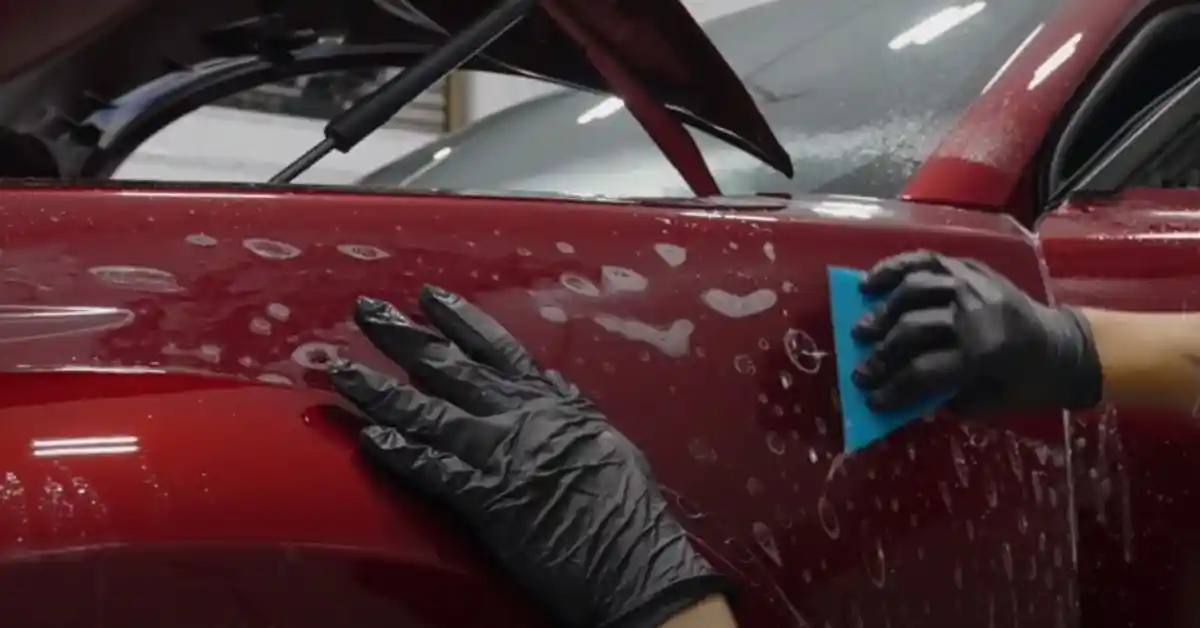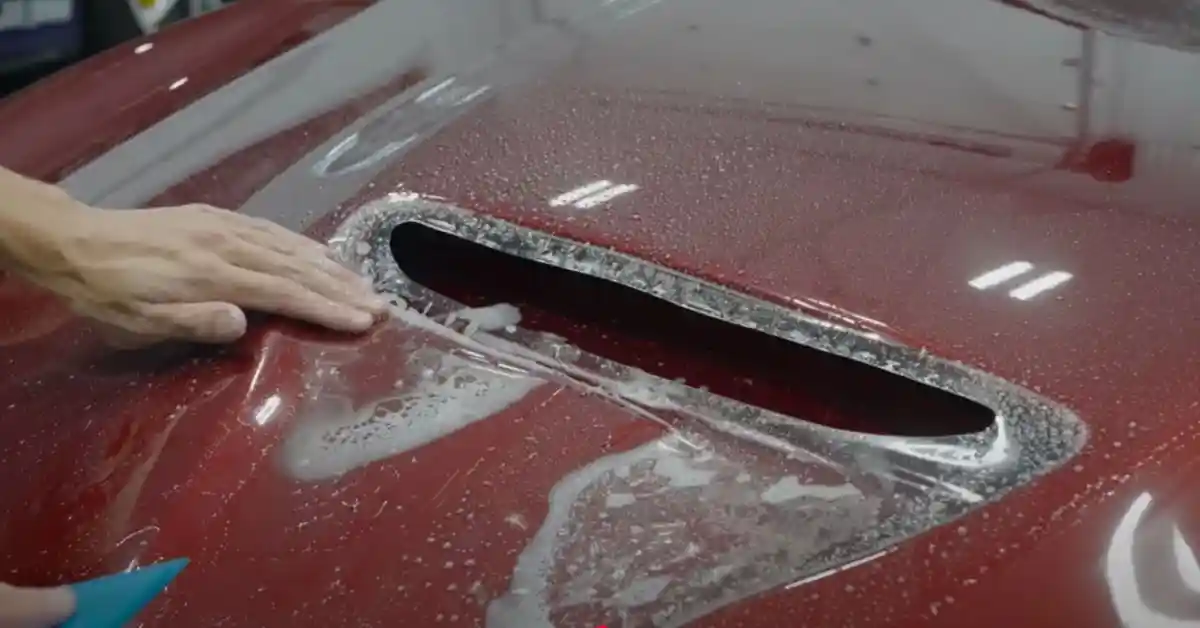Recently, a client brought their brand-new Porsche into my detailing shop, torn between paint protection film vs ceramic coating for their prized investment. After fifteen years of installing both types of protection on thousands of vehicles, I’ve developed a deep understanding of their unique strengths and limitations.
Whether you’re protecting a daily driver or a weekend showpiece, choosing between paint protection film and ceramic coating isn’t just about cost – it’s about matching the right solution to your specific needs. Through my experience managing a high-end automotive protection facility, I’ve helped countless car owners make this crucial decision.
Let’s dive into the real-world differences between these two popular paint protection options.
Understanding the Basics: PPF and Ceramic Coating
After spending countless hours working with both technologies, I can tell you that paint protection film (PPF) and ceramic coating serve different purposes, despite often being marketed as competitors. Let me break down what I’ve learned through years of hands-on experience.
PPF is a thermoplastic urethane film that physically shields your vehicle’s paint from impact damage. Think of it as a sophisticated clear band-aid that absorbs impacts from road debris, preventing chips and scratches. Through thousands of installations, I’ve witnessed its remarkable ability to self-heal from minor scratches.
Ceramic coating, on the other hand, is a liquid polymer that chemically bonds with your vehicle’s paint surface. While it doesn’t provide the same physical protection as PPF, it excels at repelling water, resisting chemical stains, and maintaining your car’s shine. I’ve seen properly applied coatings maintain their protective properties for years.
Paint Protection Film: Strengths and Limitations
Superior Physical Protection
The most compelling advantage of PPF, based on my extensive experience, is its unmatched protection against physical damage. I’ve removed PPF from vehicles after years of highway driving to reveal pristine paint underneath, despite visible damage to the film itself.
Rock chips, road debris, and even minor scratches are absorbed by the film’s self-healing properties. I regularly demonstrate this to clients by deliberately scratching a PPF sample with keys, then watching their amazement as the marks disappear with heat application.
The latest generation of PPF offers impressive clarity and hydrophobic properties. Many of my clients can’t even tell their vehicle has film applied, yet they enjoy peace of mind knowing their paint is protected from physical damage.
Installation Considerations
Installing PPF requires exceptional skill and precision. Having trained numerous technicians, I can attest that it takes months of practice to master the technique of stretching and conforming the film to complex body panels.
The installation process is time-intensive, often requiring 2-4 days for a full vehicle wrap. This translates to higher installation costs compared to ceramic coating, but the level of protection justifies the investment for many of my clients.
Coverage options range from partial (high-impact areas) to full vehicle protection. I often recommend starting with front-end coverage for clients on a budget, as this addresses the most vulnerable areas.
Ceramic Coating: Advantages and Limitations
Chemical Protection and Aesthetics
Ceramic coating’s primary strength lies in its chemical resistance and enhancement of your vehicle’s appearance. Through years of testing different products, I’ve found that quality ceramic coatings provide exceptional protection against UV damage, chemical stains, and oxidation.
The hydrophobic properties of ceramic coating make maintenance significantly easier. Water beads and rolls off the surface, taking contaminants with it. This self-cleaning effect has consistently impressed my clients, particularly those with dark-colored vehicles.
The glossy finish achieved with ceramic coating is unmatched. I’ve seen dull, aged paint transform into a mirror-like finish that lasts for years with proper maintenance.
Application and Durability
Professional ceramic coating application requires meticulous surface preparation. I spend more time on paint correction and surface preparation than on the actual coating application, as any imperfections will be permanently sealed under the coating.
While ceramic coating is more affordable than PPF initially, it requires specific maintenance products and procedures to maintain its performance. I always ensure my clients understand these ongoing requirements before proceeding with installation.
The coating’s durability varies significantly based on environmental conditions and maintenance. In my experience, professional-grade coatings typically last 3-5 years before requiring reapplication.
Combining PPF and Ceramic Coating
One of my favorite solutions for ultimate protection is combining both PPF and ceramic coating. This hybrid approach maximizes the benefits of both technologies while minimizing their individual limitations.
By applying PPF to high-impact areas and ceramic coating over the entire vehicle (including the PPF), we create a comprehensive protection system. The PPF provides physical protection, while the ceramic coating enhances the overall appearance and makes maintenance easier.
This combination has proven particularly effective for high-end vehicles that require both maximum protection and aesthetic excellence. Though it represents a significant investment, the long-term benefits often outweigh the initial cost.
FAQs About Paint Protection Film vs Ceramic Coating
What is the best type of paint protection for cars?
The best type depends on your needs. Paint Protection Film (PPF) offers superior scratch and chip resistance, while ceramic coating provides long-lasting shine and UV protection.
What’s the best way to protect your car’s paint?
A combination of ceramic coating for gloss and hydrophobic properties plus PPF for impact protection gives the most complete defense for your car’s paint.
Is PPF better than ceramic coating?
PPF is better for physical protection against scratches, stone chips, and road debris. Ceramic coating excels in repelling water, dirt, and UV rays while enhancing gloss.
Which car coating is best?
Ceramic coating is best for long-lasting shine, easier cleaning, and UV protection. If impact resistance is a priority, PPF is the stronger choice.
Which is better PPF or Teflon?
PPF is far superior to Teflon. While Teflon provides temporary shine, PPF gives durable protection against scratches, chips, and environmental damage.
Is graphene better than ceramic?
Graphene coatings are newer and claim stronger durability, higher heat resistance, and longer lifespan than ceramic. However, ceramic is more proven and widely available.


